
The British Library has recently acquired three more of my artist’s books for their permanent collection. The first is called Strand of the Thames, and in it I’ve set an extraordinary entry from Virginia Woolf’s Diary of 1939. She writes about discovering the Thames foreshore in London, observing and thinking as she walked – and so I followed in her footsteps seventy years later, and found everything (everything) still as she described. I made the book in the form of a 1930’s photograph album, with 15 grisaille images of the places where VW’s walking and observing, like photographs in watercolour, and to bring the material presence of the river itself into the book, I mixed the watercolour paint with Thames water. The words are lettered with a little driftwood stick from the river, picked up on that same strand.


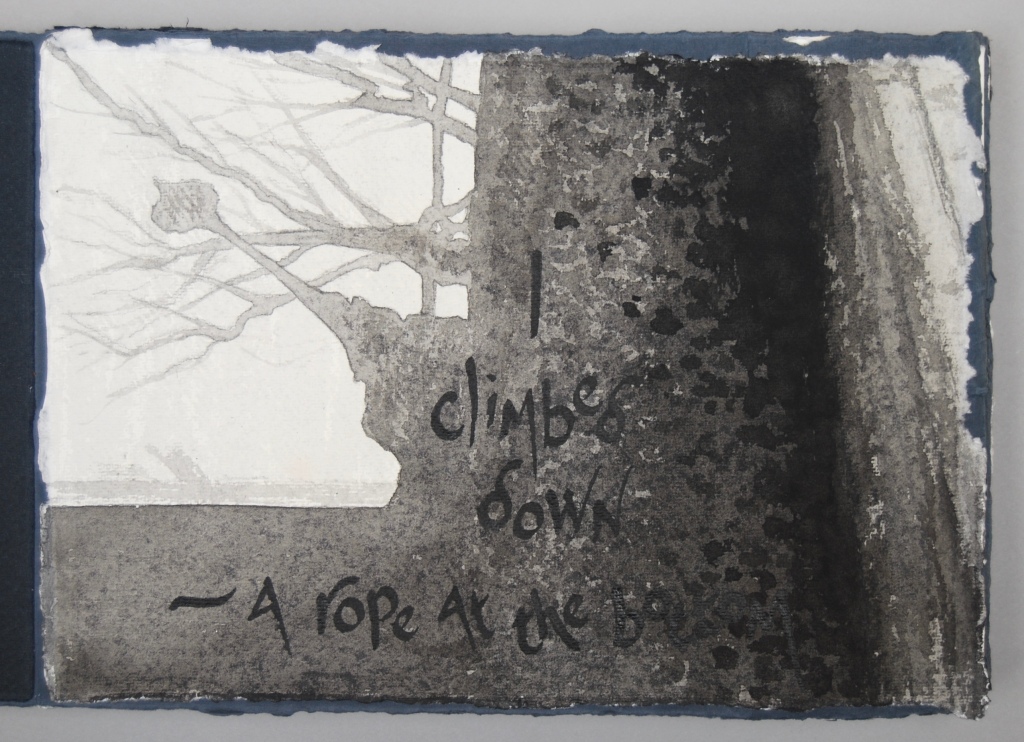
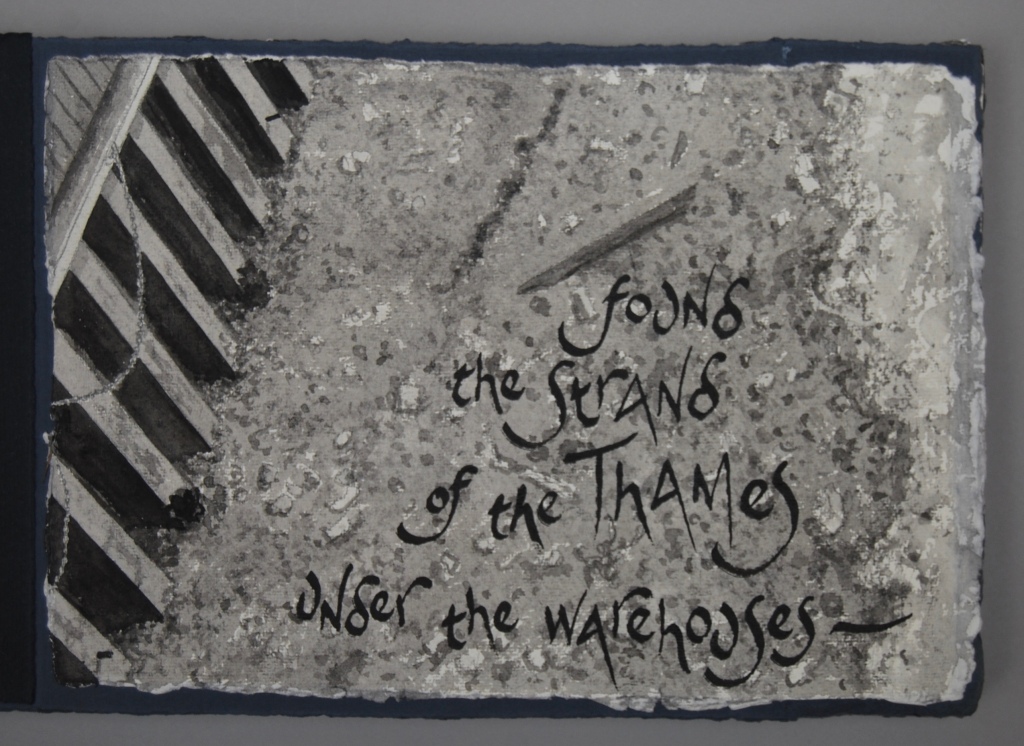
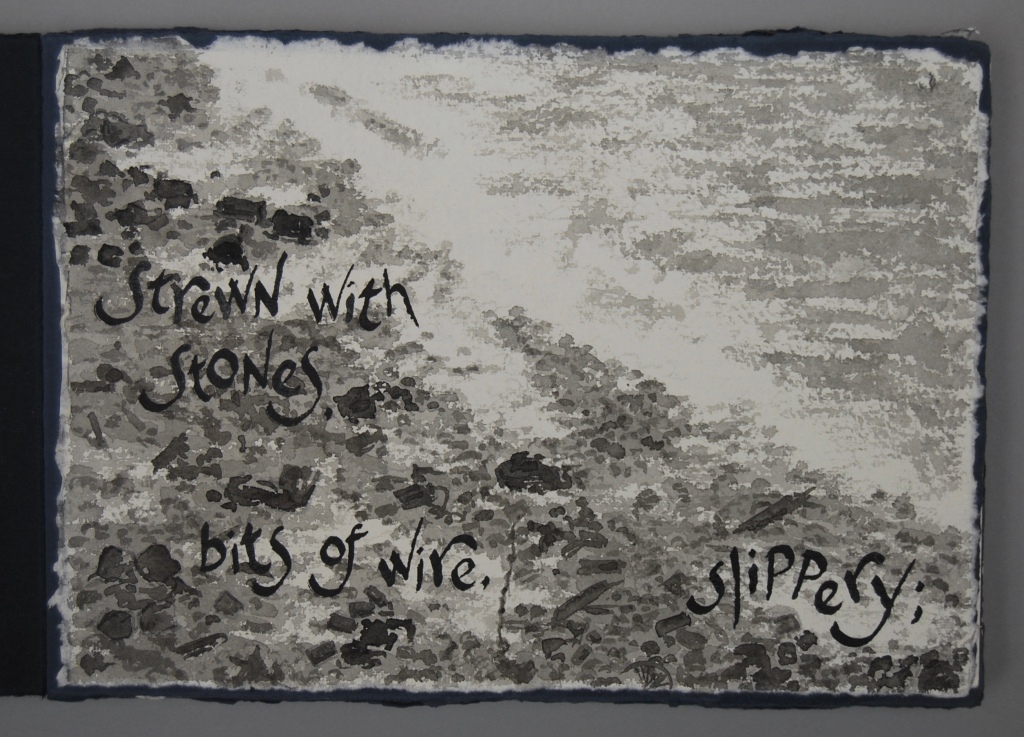
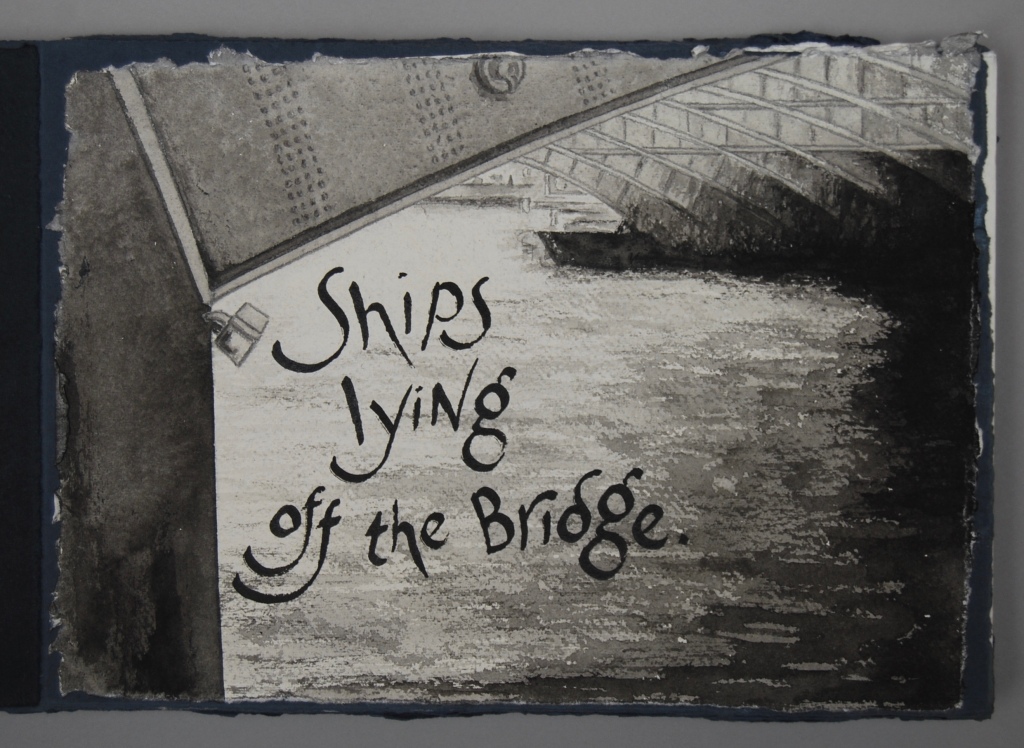
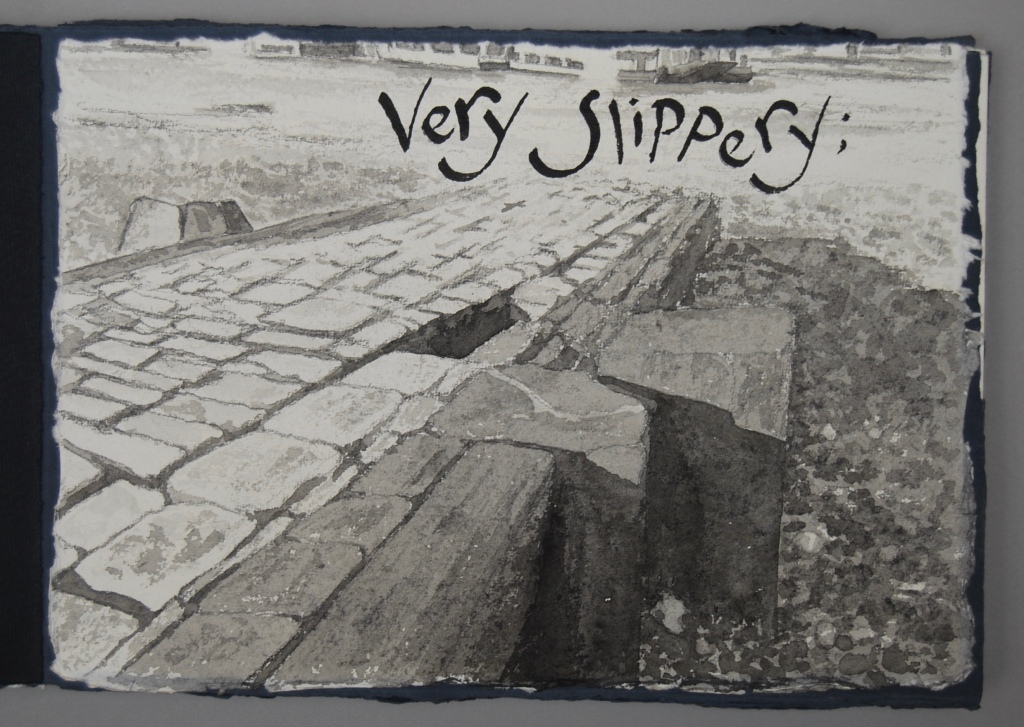
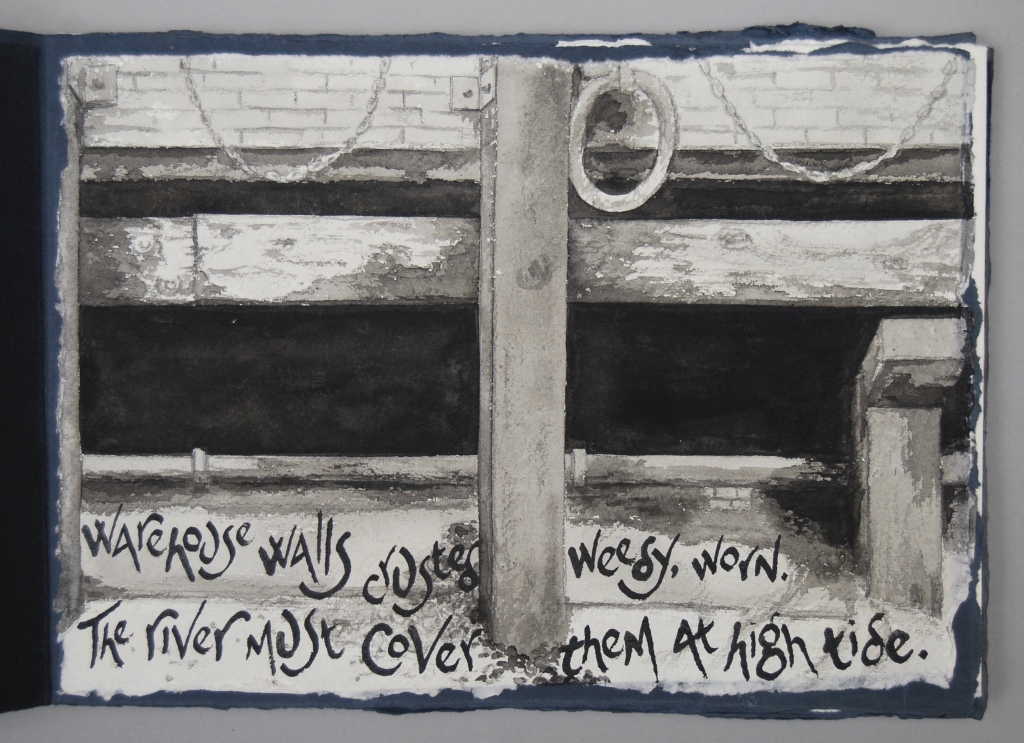
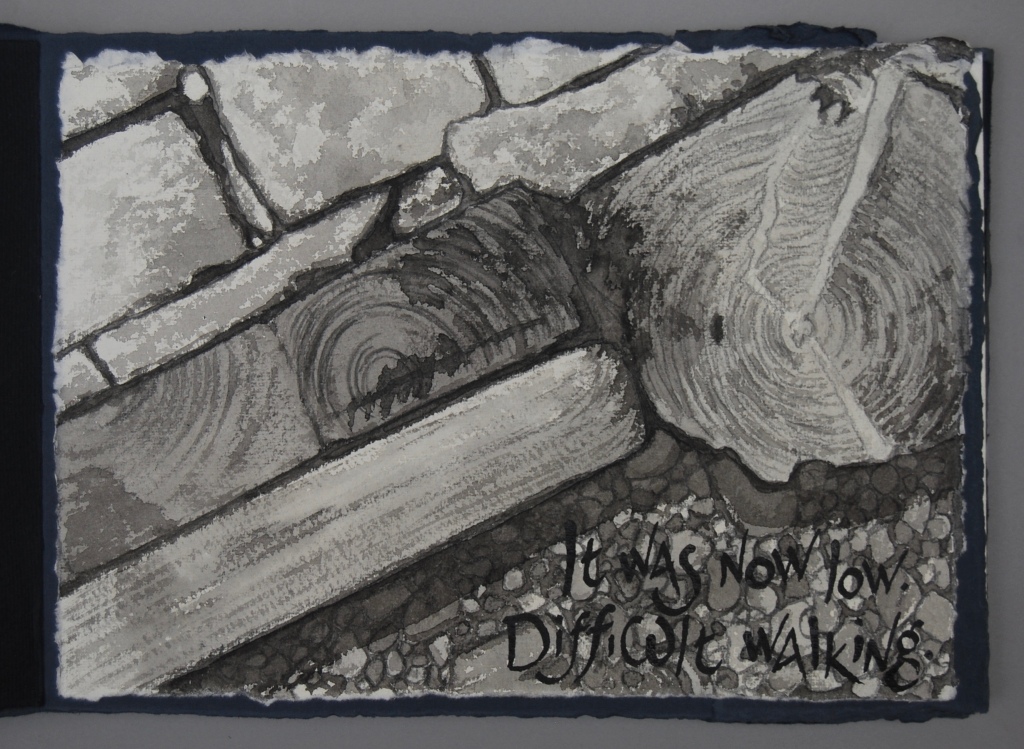

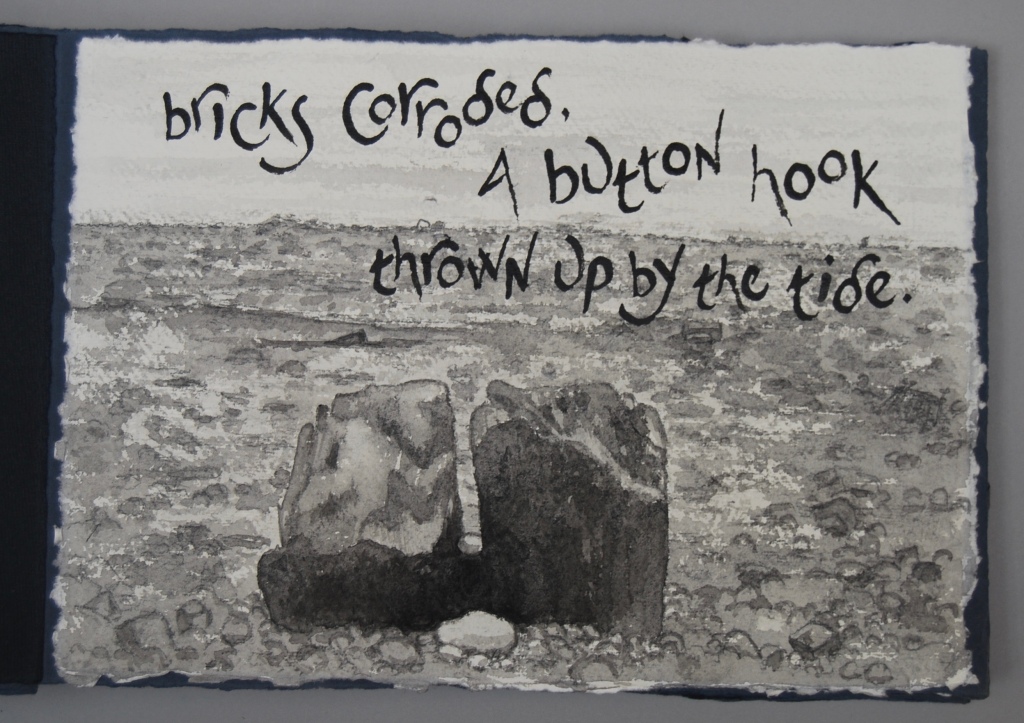
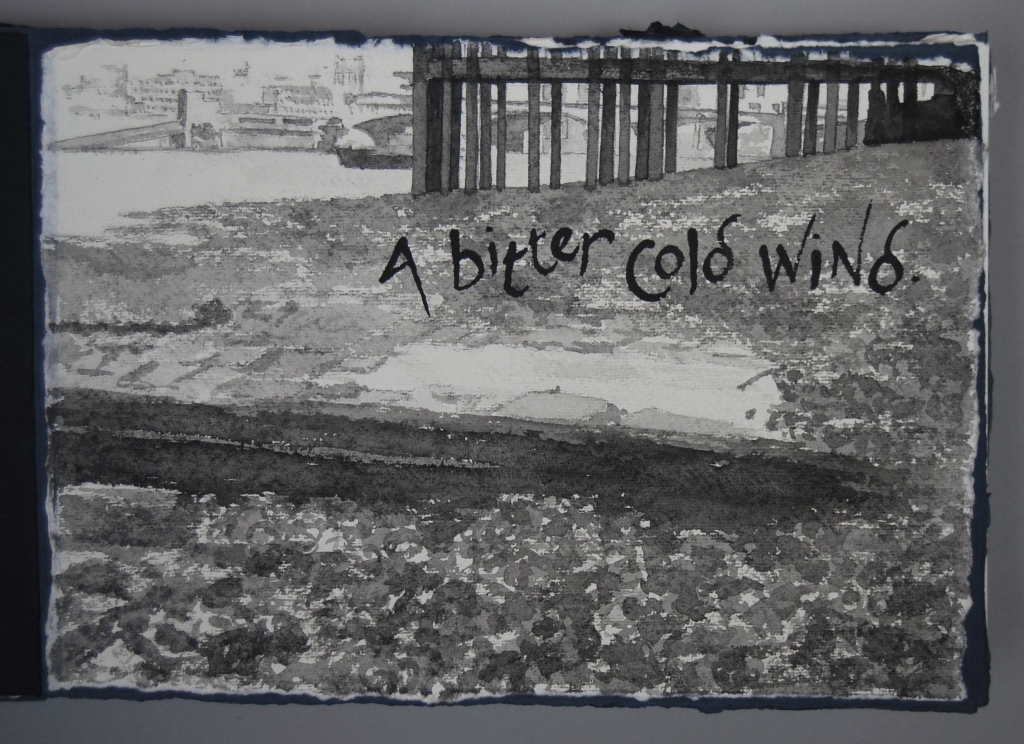
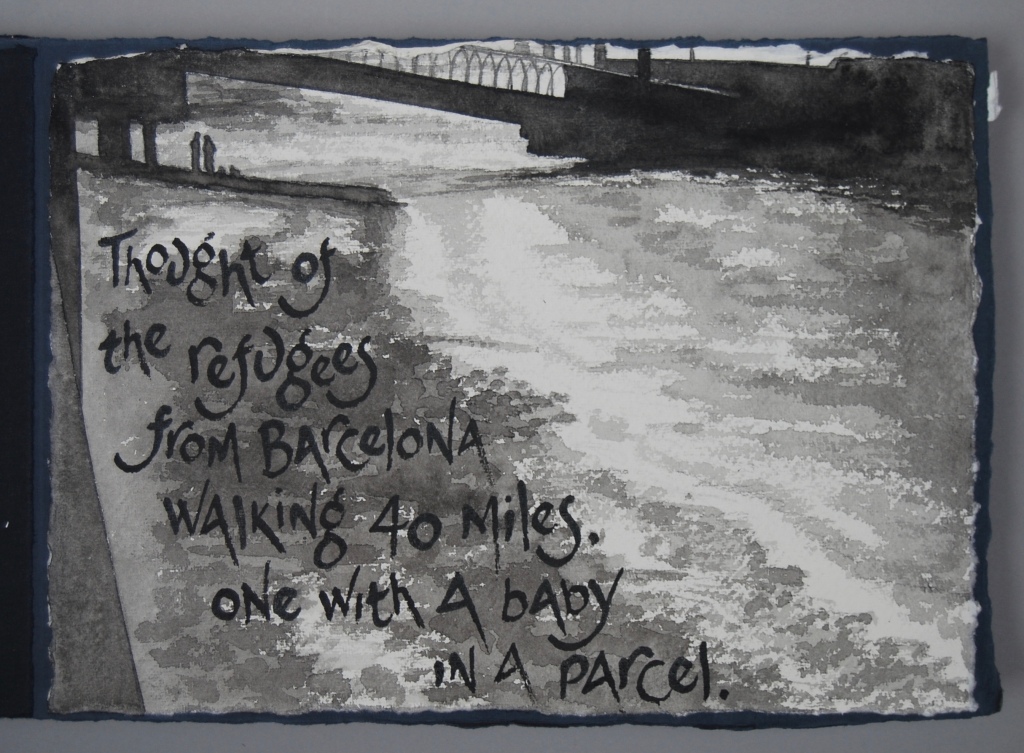

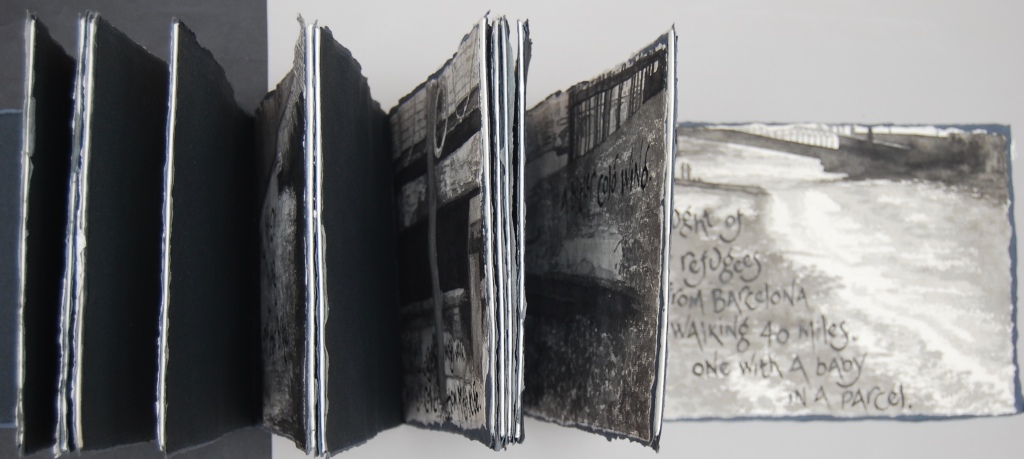
A limited edition of Strand of the Thames
Making editions of my artist’s books isn’t always easy or appropriate; one-off works sometimes don’t lend themselves to duplication in any way. But I like to make editions where possible, as they are a much more affordable version of the artwork, and for this book, because of the photograph-album reference in the original, I’ve made a quarter-size facsimile (4×6 photo size), constructed in exactly the same way on handmade paper, with black-and-white photographs of the grisaille images mounted with acid-free photo corners. This is a signed limited edition of 20, and the British Library have also added one of these to their collection, but there are a few left available from the studio, at £60 each. [Contact lizmathews(at)pottersyard.co.uk]
You can read more about this book on the British Library’s blog, in a guest post by me: Virginia Woolf’s Haunted Walk

From walking with Virginia Woolf to flying with Maureen Duffy
The other one of my artist’s books that was recently added to the British Library’s collection is Paper Wings.
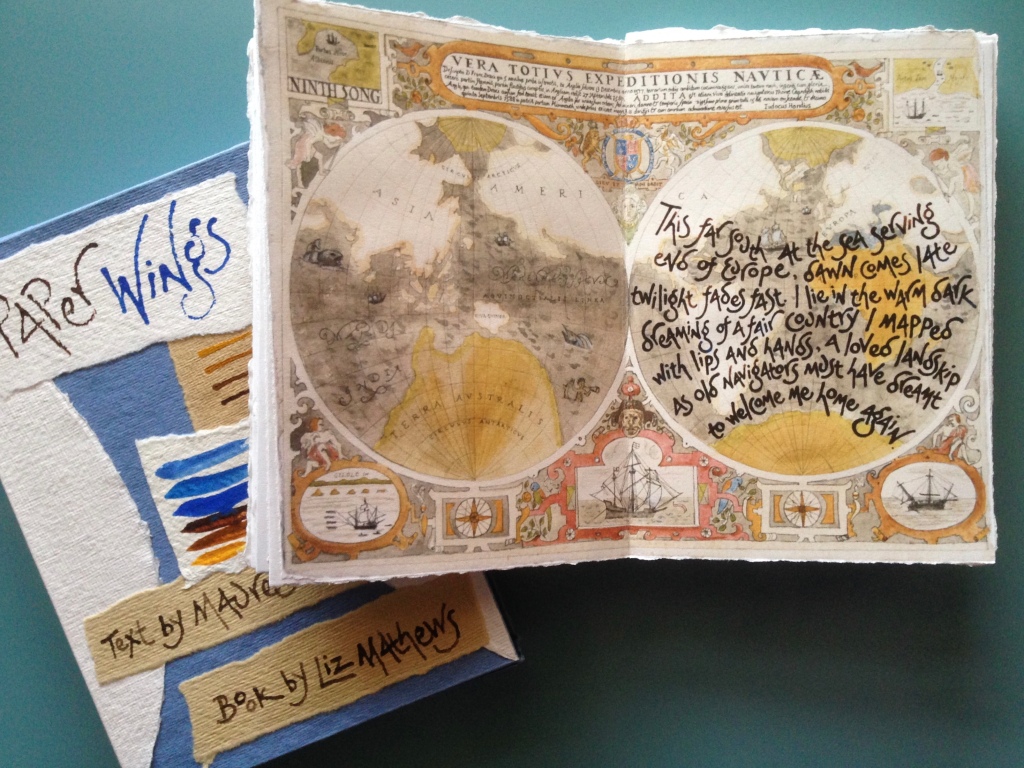
One of a special edition of five, this artist’s book is again constructed in exactly the same way as the original. With Paper Wings, the ‘original’ is also a prototype, since I intended to make an edition of the work from the start. It’s one of my all-time favourites among my oeuvre – inspired by Songs for Sappho, a very exciting love poem cycle by Maureen Duffy, which the poet allowed me to set in its entirety and to publish for the first time here at The Pottery Press.
A new love song cycle by Maureen Duffy is an event in itself – and these poems are engaging, witty, moving, personal yet universal, and a profound exploration of all the weathers of love by a poet who brings her years of experience and a deep, sensitive humanity to the work. And the cycle itself is dazzlingly inventive, drawing the reader into the immediacy of the experience with running themes and motifs, contrasting humour and vulnerability, strength and tenderness, darkness and light in the different weathers and moods, the spiralling hopes and fears of a love documented from its beginnings through the seasons of three years, and on into the future.

I’ve written before here on Daughters of Earth about my work on the book, and its first flight as an installation at Enitharmon’s London gallery. The book itself is now constructed into a double-sided concertina that opens fully to 27 metres long, with each poem-page forming a link in the chain and set so that the first and the last songs are back-to-back, forming an unending cycle within the book, in reflection of the song-cycle itself. This form gave me an opportunity to reflect that infinite variety and inventiveness of the individual poems by giving each a full page of handmade paper 30cm high by 42cm wide, and working on the design of each setting individually, often incorporating materials from the words.





I mixed paint with wine, riverwater, honey, wax, sugar, salt, mud, snow, rain, earth, clay, herbs, tears or blood, and lettered the words with a driftwood stick, a twig from an apple tree, a white dove’s feather, a reed pen, a clothespeg, a chopstick, a hand-cut bamboo nib, a paintbrush and a clay-working tool, as well as the occasional steel nib – and I used many different methods of construction for the pages to reflect each poem as closely and as materially as possible. I’ll show you a small selection of poem-pages here, beginning with Song 42, where it all started for me. I was delighted when Maureen Duffy came to a private view at midsummer 2012 of light wells, my exhibition at The London Centre for Psychotherapy – and even more pleased when she bought one of the pots in the show. At this private view we talked a little about the possibility of my setting some of her work – I’ve been a very appreciative reader of Maureen’s fiction and poetry for many many years, and wanted to work with her words – and to my great pleasure she was open to the idea. You can perhaps imagine my delight when she sent me this poem a few days later – a poem inspired by one of my own bowls – the latest in the poem cycle she was then writing. And we went on from there:
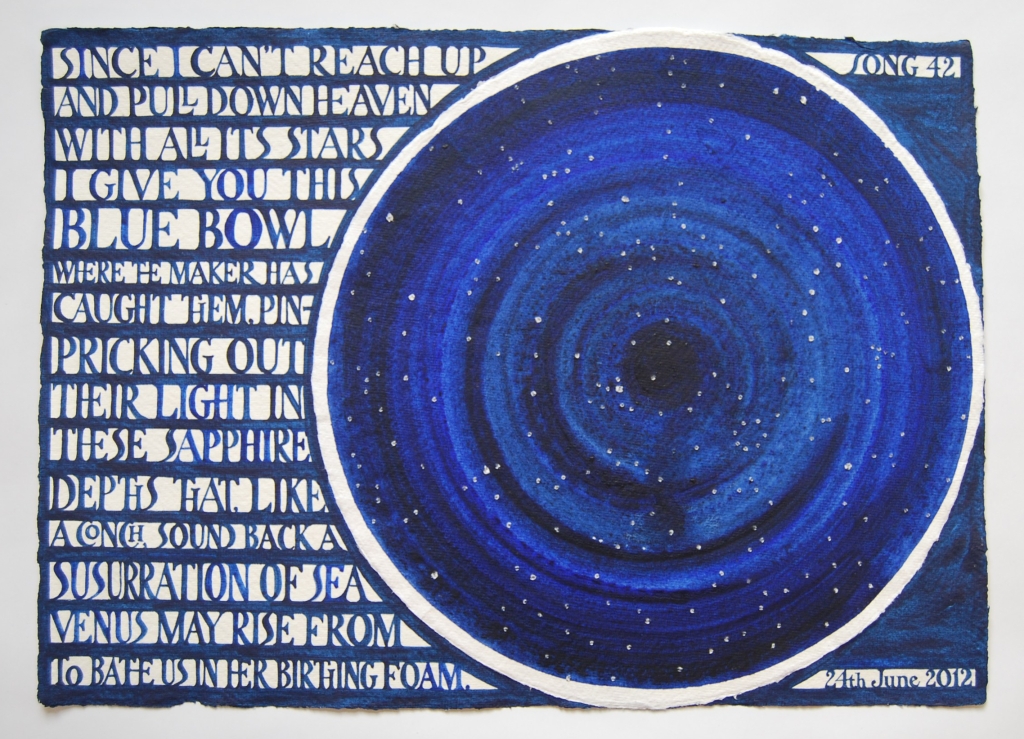
The idea of these love poems as messages flying through space, linking the parted lovers with a strong cord, is one of the themes running through the cycle that evoked very powerful images for me.

Also present in that first poem-page is the motif of the cosmic circle or sphere, or by extension two parted hemispheres, that conjures Donne – a motif that I’ve referenced throughout the cycle, including the pages for the first and last songs, as well as in the circular structure of the book itself:

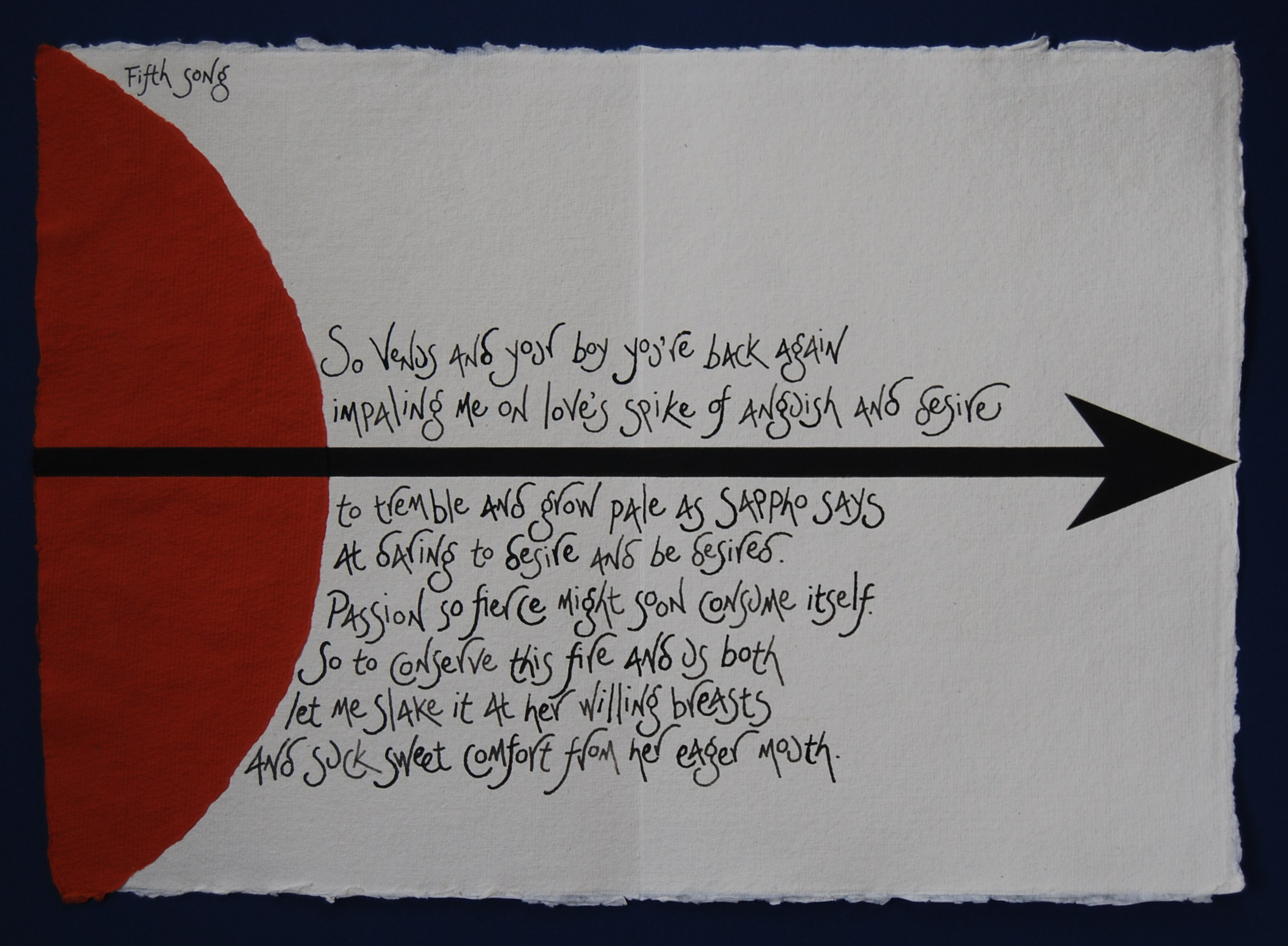
Many of the poems were written in direct response to a contemporary event; this next one evokes that extraordinary cosmic moment in December 2010 when the light of the sun shining on the full moon was completely eclipsed by the earth’s shadow:
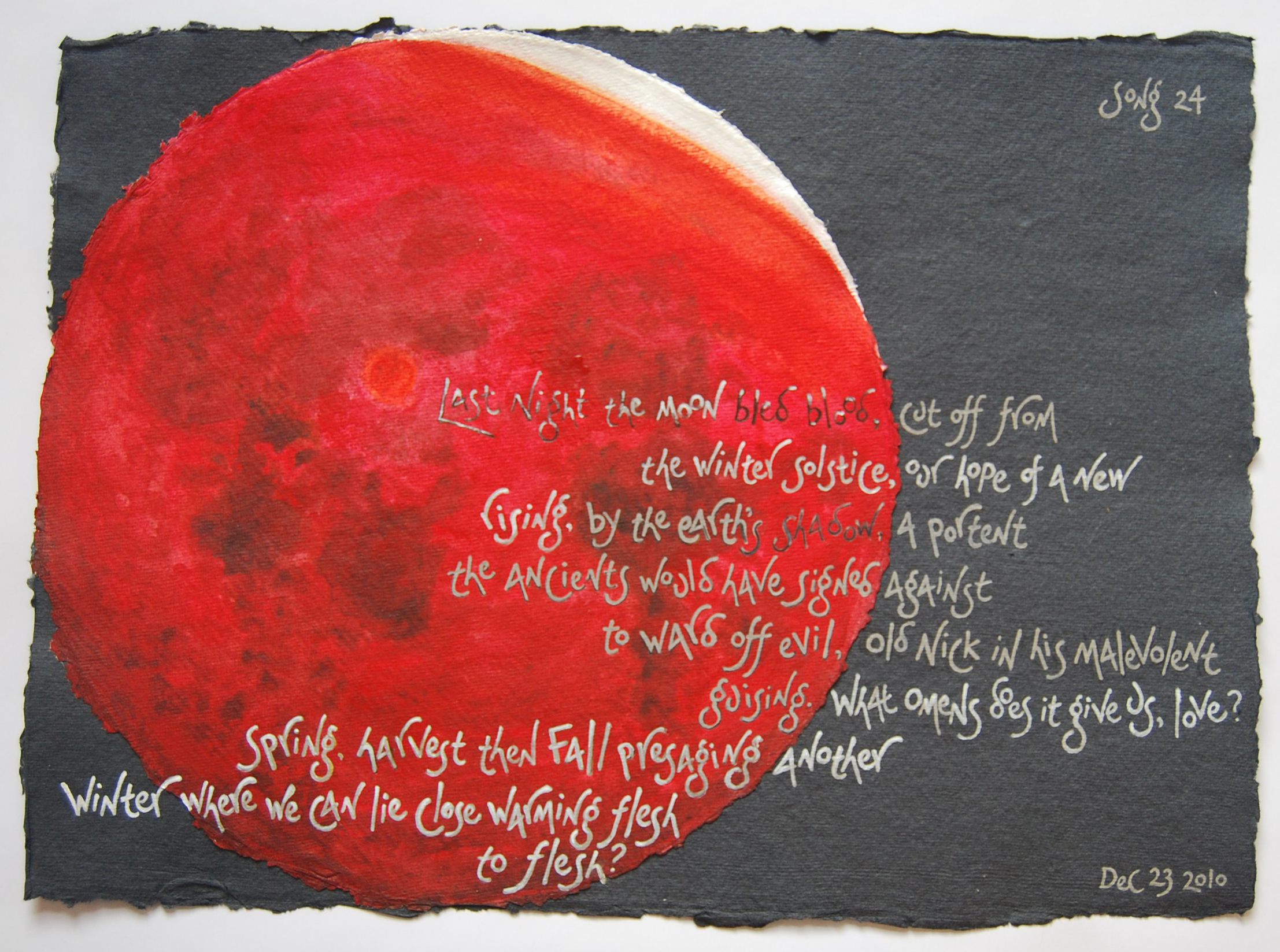

‘Like Hafiz seven centuries ago’, I formed the letters of Third Song with a reed pen from Persia – exactly like those that can be seen in the British Museum – dipped into red wine. For the next one, I drew and lettered with a traditional Japanese brush and based the design of the image on a 10th Century woodcut from The Tale of Gengi – also written by a woman:
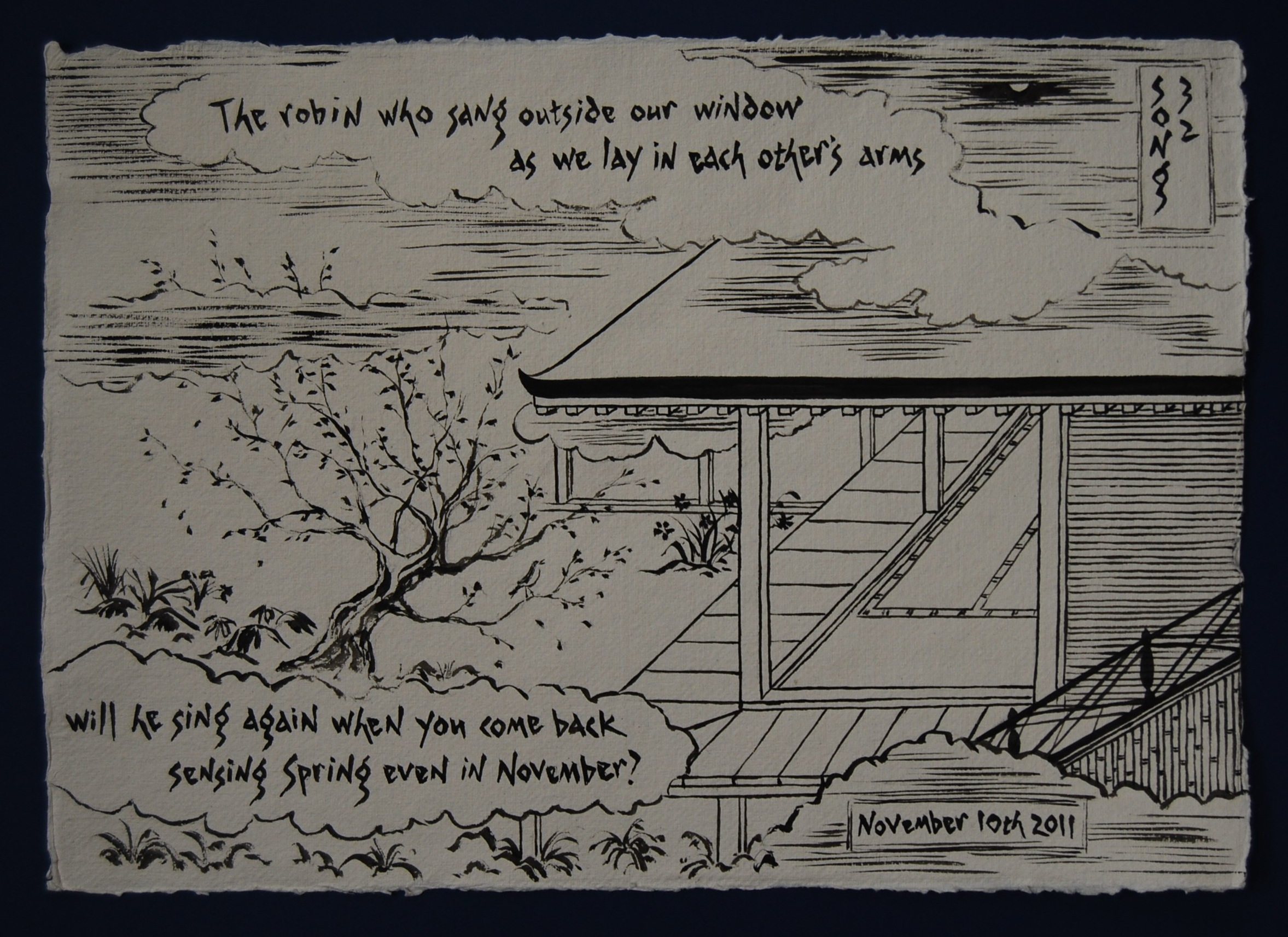
And for this next one I posed for 32 self portrait silhouettes in a variety of hats, and lettered the poem with rainwater mixed into the white paint:

For Song 44 I made a snow-cage through which to glimpse the words with white paint mixed into snow-melt:
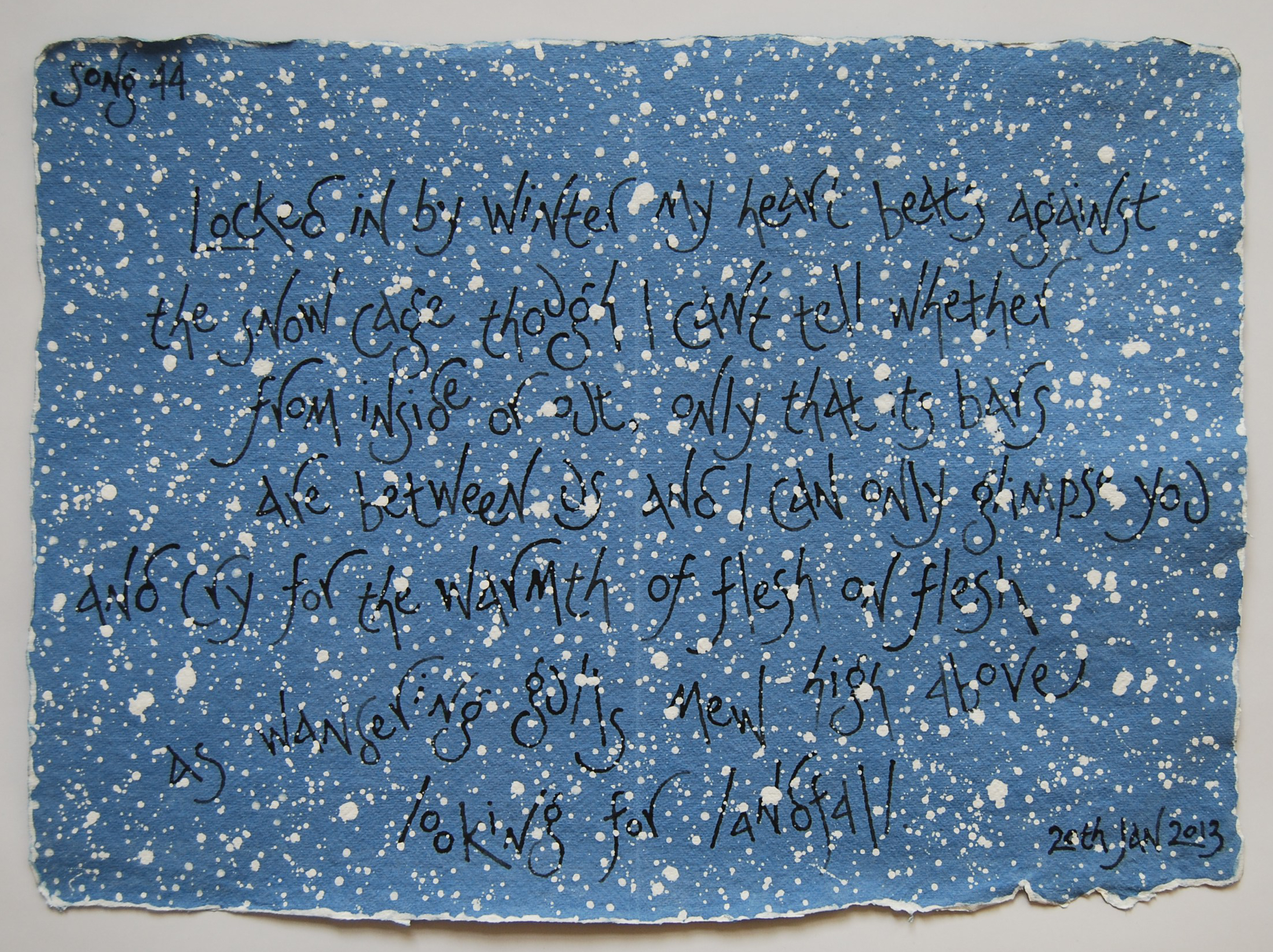
Because I was setting the entire cycle, and couldn’t pick and choose which lines to set, I found one or two challenges to my image-making skills among the poems. These poems are very contemporary, wrought from the fabric of everyday life, and I’ve never before set a poem with the line ‘my email is down’ –
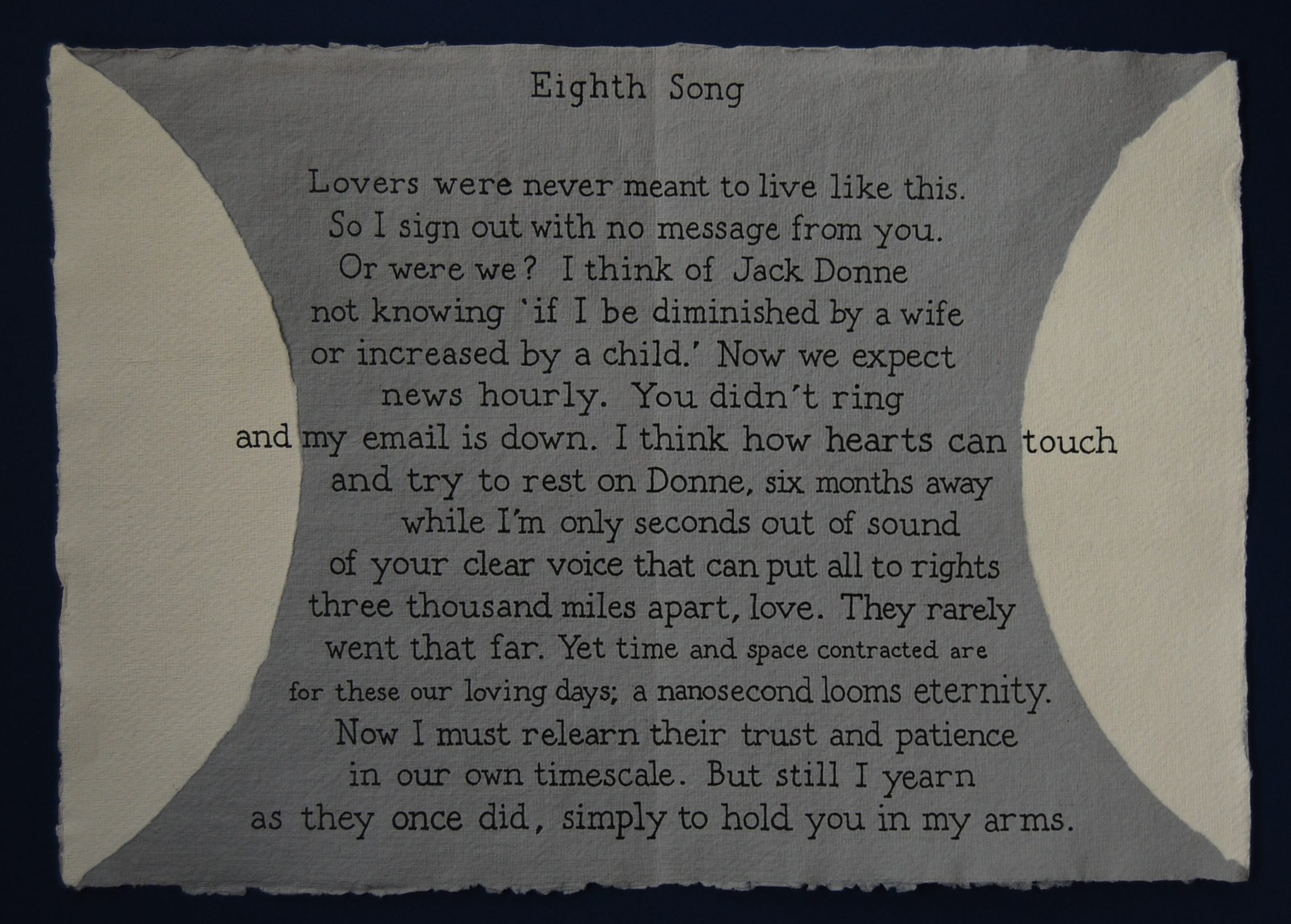
– or one referencing a draining board:

but with both of these, I thought that what worked so well in the poem would also work in the image it evoked in my mind, and just trusted the words – with some success, I think. Some of the poems brought a strong visualisation readily to my mind, and clearly suggested materials I could include – for the next one I mixed the honey-coloured paint with sugar:
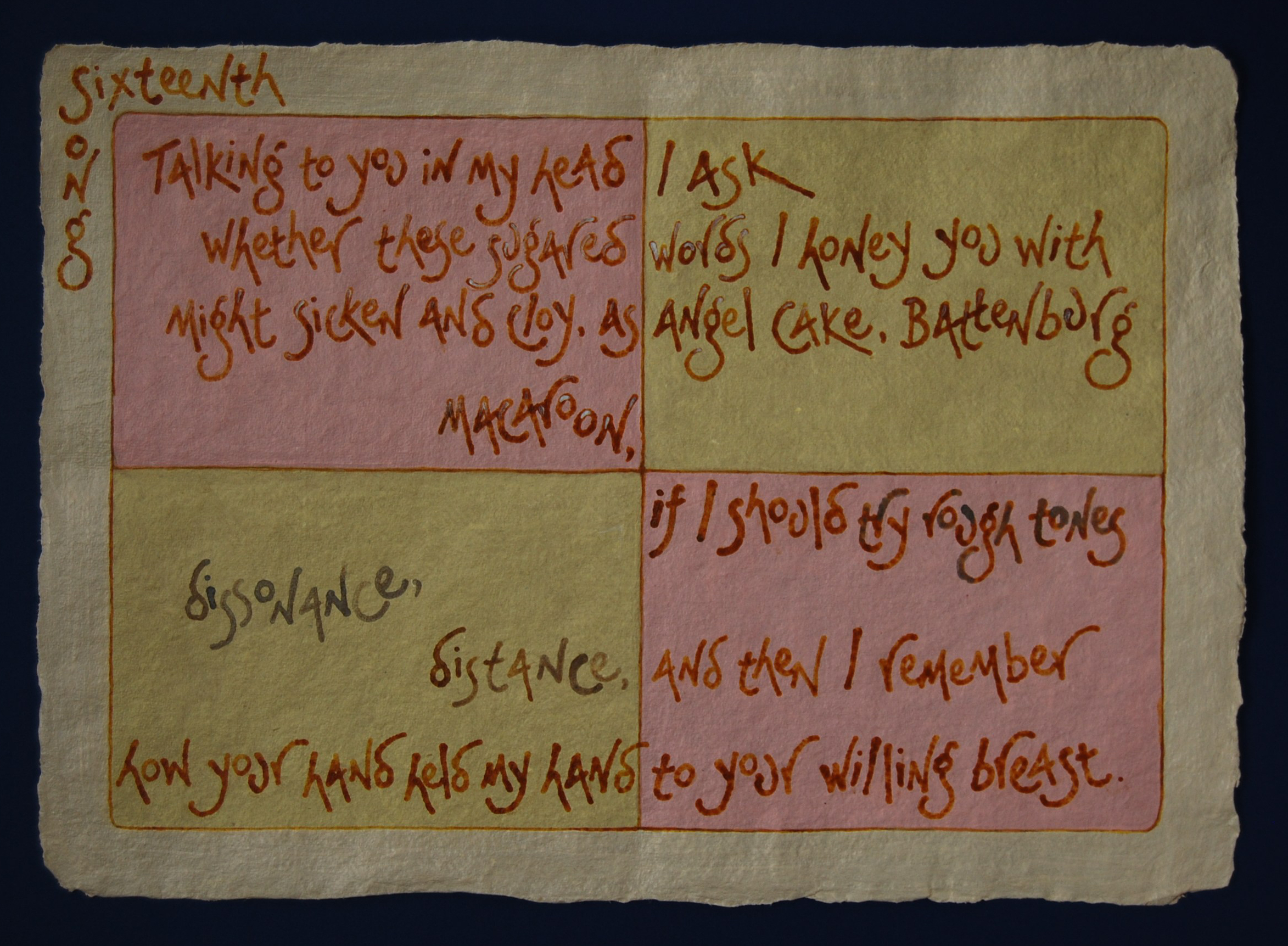
and this one I lettered with a white dove’s feather picked up on Hampstead Heath:

For my favourite of all, I mixed the paint with honey, and lettered it with a wicker stick:

– and if you look closely, you can see some little stripy bee-shapes in the surface texture of the handmade paper, transferred from the drying towel in the press – another embodiment of the words in the material form of the setting.
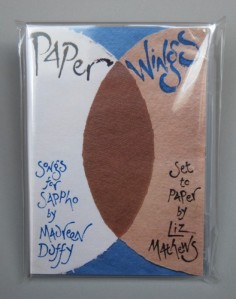
You can see that I took these photographs of each poem-page before the construction of the book, and I used them to make an artist’s film. More than a simple film-of-the-book, Paper Wings the film is an exciting, immersive experience. As the pages turn, Maureen Duffy reads each poem – her lived-in voice bringing a living and breathing presence to the cycle, within a soundtrack of the seasons.
The film is available on dvd from The Pottery Press, for £10. (Contact thepotterypress[at]pottersyard.co.uk)

From the photographs I also made a limited edition of 100 full-colour books, bound suspended from a top-binding for two reasons: first, to reflect the form of the installation (where the poem-pages were strung overhead like prayer-flags with the words flying through the air), and also to allow the reader to follow the through-the-year sequence like a calendar, so you can stand the book and turn the pages day-by-day. Each book in this edition is numbered and signed both by the artist and the poet, and again, available from The Pottery Press for £15 – we have a few copies left.

And the Special Edition of five (one of which the British Library have just added to their collection) is a half-size facsimile of the original, constructed in exactly the same way as the (27-metre-long) concertina book, from full-page digital reproductions of each page and acid-free adhesive. It’s contained in a slipcase made from off-cuts of the handmade papers in the original, and it’s numbered and signed by the poet and the artist. I have a couple of copies still available for £250. The British Library are now showing their copy in an exciting new display in the Treasures Gallery, which features the work of 17 women book artists within an exhibition called The Art of the Book.

I think of Paper Wings as a key feature of my continuing Singing the Year collection of contemporary illuminated manuscripts. I’ve enjoyed screening the film at arts festivals, including BABE 2017 at the Arnolfini in Bristol, and turn the page artists’ book fair in Norwich, as well as showing the book at events including The National Poetry Library’s Material Word, and King’s College London’s Fabrication Arts and Humanities Festival. But somehow I feel reluctant to part with the original, which is still with me here in the studio. It took me five months to make, during a time when I was very ill, and it was quite literally a life-saver, an escape from the harsh realities of pain and fear into a world of inspiration and poetry. It represents for me something inexpressible – as perhaps the best poetry always does – and it gives a material form to a poem-cycle that speaks of unending love. I’ll be reading it again on National Poetry Day.
Leave a comment